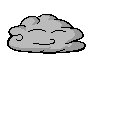
What is wind?
Wind is air in motion. It is produced by the uneven heating of the earth’s surface by the sun. Since the earth’s surface is made of various land and water formations, it absorbs the sun’s radiation unevenly. Two factors are necessary to specify wind: speed and direction.
What causes the wind to blow?
As the sun warms the Earth's surface, the atmosphere warms too. Some parts of the Earth receive direct rays from the sun all year and are always warm. Other places receive indirect rays, so the climate is colder. Warm air, which weighs less than cold air, rises. Then cool air moves in and replaces the rising warm air. This movement of air is what makes the wind blow.
Wind Direction
Wind is air in motion. It is produced by the uneven heating of the earth’s surface by the sun. Since the earth’s surface is made of various land and water formations, it absorbs the sun’s radiation unevenly. Two factors are necessary to specify wind: speed and direction.
What causes the wind to blow?
As the sun warms the Earth's surface, the atmosphere warms too. Some parts of the Earth receive direct rays from the sun all year and are always warm. Other places receive indirect rays, so the climate is colder. Warm air, which weighs less than cold air, rises. Then cool air moves in and replaces the rising warm air. This movement of air is what makes the wind blow.
Wind Direction
Although wind blows from areas of high pressure to areas of low pressure, it doesn't blow in a straight line. That's because the earth is rotating. In the northern hemisphere, the spin of the earth causes winds to curve to the right (to the left in the southern hemisphere). This is called the coriolis effect. So in the northern hemisphere, winds blow clockwise around an area of high pressure and counter-clockwise around low pressure.
How Fast Is It? You can estimate wind speed with the Beaufort Scale. It was developed in 1805 by a Navy admiral to measure wind at sea. But we can also use it to measure wind on land.
ESTIMATE WIND BY WATCHING OBJECTS MOVE!
Miles Per Hour Effects <1 Smoke rises straight up, no motion
1-3 Smoke drifts slowly, tree leaves barely move
4-7 Leaves rustle, wind felt on face
1-3 Smoke drifts slowly, tree leaves barely move
4-7 Leaves rustle, wind felt on face
8-12 Leaves and twigs move, dust raised from ground
13-18 Small branches move, dust and paper blown away.
19-24 Small trees and large branches sway
25-31 Big branches move a lot, wind whistles, umbrellas
turn inside out.
32-38 Whole trees sway, hard to walk
39-46 Tree twigs break, very hard to walk
47-54 Branches, roof tiles blown down
55-63 Trees uprooted, severe building damage
64-72 Severe destruction
turn inside out.
32-38 Whole trees sway, hard to walk
39-46 Tree twigs break, very hard to walk
47-54 Branches, roof tiles blown down
55-63 Trees uprooted, severe building damage
64-72 Severe destruction
CORIOLAS EFFECT
Coriolis effect |
 The Coriolis effect is a (fictitious) force which acts upon any moving body (an object or an parcel of air) in an independently rotating system, such as the Earth. In meteorology, the horizontal component of the Coriolis force is of primary importance, as the most well known application of the Coriolis force is the movement or flow of air and ocean currents across the Earth. The effect is named after the French physicist Gaspard de Coriolis (1792-1843), who first analyzed the concept mathematically. The Coriolis effect is a (fictitious) force which acts upon any moving body (an object or an parcel of air) in an independently rotating system, such as the Earth. In meteorology, the horizontal component of the Coriolis force is of primary importance, as the most well known application of the Coriolis force is the movement or flow of air and ocean currents across the Earth. The effect is named after the French physicist Gaspard de Coriolis (1792-1843), who first analyzed the concept mathematically. The Earth rotates about its axis from west to east once every 24 hours. This daily rotation of the earth means that in 24 hours a point on its equator moves a distance of some 40 000 kilometres, giving it a tangential velocity of about 1670 kilometres per hour (or roughly 1000 mph). A point at the latitude of, say, Rome, travels a shorter distance in the same time and therefore has a lower tangential velocity - about 1340 kph (840 mph), while the relative tangential speed at the poles is zero. Consequently, an object or current moving above the Earth in a generally northerly or southerly direction (away from the equator) will have an greater eastward velocity than the ground underneath, and so will appear to be deflected in relation to the rotation of the Earth. This deflection acts towards the right (or clockwise) in the, in the Northern Hemisphere and towards the left (or anti-clockwise) in theSouthern Hemisphere. The Earth rotates about its axis from west to east once every 24 hours. This daily rotation of the earth means that in 24 hours a point on its equator moves a distance of some 40 000 kilometres, giving it a tangential velocity of about 1670 kilometres per hour (or roughly 1000 mph). A point at the latitude of, say, Rome, travels a shorter distance in the same time and therefore has a lower tangential velocity - about 1340 kph (840 mph), while the relative tangential speed at the poles is zero. Consequently, an object or current moving above the Earth in a generally northerly or southerly direction (away from the equator) will have an greater eastward velocity than the ground underneath, and so will appear to be deflected in relation to the rotation of the Earth. This deflection acts towards the right (or clockwise) in the, in the Northern Hemisphere and towards the left (or anti-clockwise) in theSouthern Hemisphere. Moving air undergoes an apparent deflection from its path, as seen by an observer on the Earth. This apparent deflection is the result of the Coriolis acceleration (or Coriolis force). The amount of deflection the air makes is directly related to both the latitude and the speed at which the air is moving. Therefore, slowly blowing winds will be deflected only a small amount, while stronger winds will be deflected more. Likewise, winds blowing closer to the poles will be deflected more than winds at the same speed closer to the equator. The Coriolis force is zero right at the equator and becomes a maximum at the poles. Moving air undergoes an apparent deflection from its path, as seen by an observer on the Earth. This apparent deflection is the result of the Coriolis acceleration (or Coriolis force). The amount of deflection the air makes is directly related to both the latitude and the speed at which the air is moving. Therefore, slowly blowing winds will be deflected only a small amount, while stronger winds will be deflected more. Likewise, winds blowing closer to the poles will be deflected more than winds at the same speed closer to the equator. The Coriolis force is zero right at the equator and becomes a maximum at the poles.
The Coriolis force only acts on large objects like air masses moving considerable distances. Small objects, for example ships at sea, are too small to experience significant deflections in direction due to the Coriolis force. Therefore the Coriolis force is particulary significant with regards to winds, ocean currents and tidal streams. The idea of the Coriolis effect was developed independently by William Ferrel in America.
|
WIND/ENERGY ENGINEER
- Read the article; work through the tabs at top of the page
- take notes
- we will discuss this career in class
Windward: The side of a mountain or any object facing the wind.
Leeward: The side of a mountain or any object sheltered from the wind.
Prevailing wind: The direction from which the winds blow most of the time. Average wind direction. In N.Y.S. the prevailing winds are from the southwest.
- Large bodies of water will :
- Moderate temperatures extremes.
- Water is slow to warm up (cools hot air) and slow to cool off (warms cold air).
- Provide a source of moisture for the air, precipitation tends to be higher.
- Near the center of a land mass :
- Temperatures are more extreme (very hot or cold).
- Precipitation tends to be lower (no water sources).
- Elevation changes:
- Denser air can contain more heat energy.
- Temperatures decrease as elevation increase.
- Near mountains:
- As air approaches the mountains (windward side), it rises to go over them.
- As it rises, it expands and cools to the point where the air can not hold water vapor anymore.
- This is called the dew point and clouds form. Precipitation occurs.
- Most of the moisture is taken out of the air raby the time it gets over the mountain summits.
- As the air descends down the mountain's leeward side it compresses and warms.
- The warming air absorbs moisture from the ground and dries the leeward side (rain shadow).
- Rain Shadow
 A rain shadow is a
patch of land that has been forced to become a desert because mountain ranges blocked all
plant-growing, rainy weather. On one side of
the mountain, wet weather systems drop rain and snow. On the other side of the mountain—the rain
shadow side—all that precipitation is blocked.
A rain shadow is a
patch of land that has been forced to become a desert because mountain ranges blocked all
plant-growing, rainy weather. On one side of
the mountain, wet weather systems drop rain and snow. On the other side of the mountain—the rain
shadow side—all that precipitation is blocked.In a rain shadow, it’s warm and dry. On the other side of the mountain, it’s wet and cool. Why is there a difference? When an air mass moves from a low elevation to a high elevation, it expands and cools. This cool air cannot hold moisture as well as warm air. Cool air forms clouds, which drop rain and snow, as it rises up a mountain. After the air mass crosses over the peak of the mountain and starts down the other side, the air warms up and the clouds dissipate. That means there is less rainfall.
You’ll often find rain shadows next to some of the world’s most famous mountain ranges. Death Valley, a desert in the U.S. states of California and Nevada, is so hot and dry because it is in the rain shadow of the Sierra Nevada mountain range. The Tibetan Plateau, a rain shadow in Tibet, China, and India has the enormous Himalaya mountain range to thank for its dry climate.




